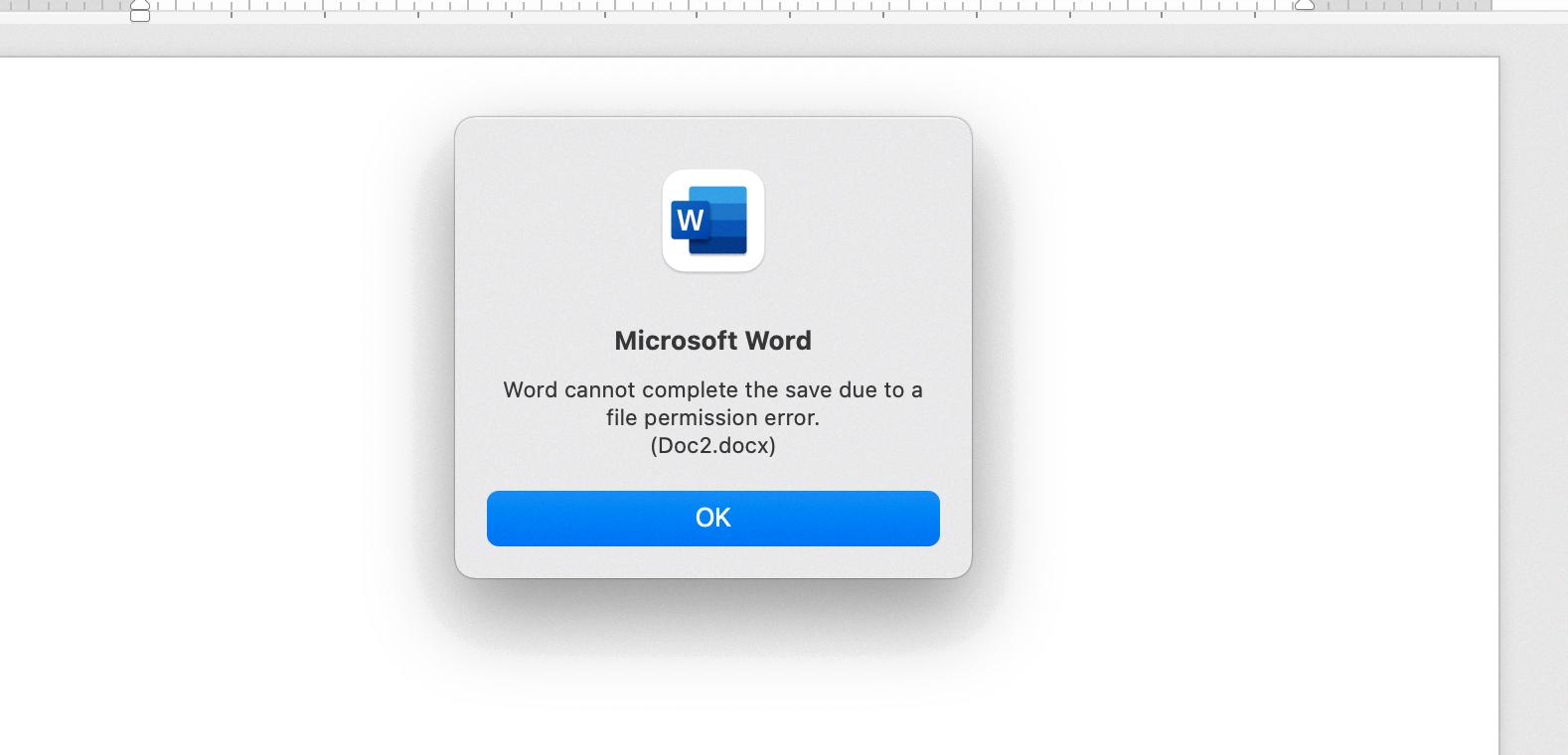Do you often encounter file permission errors on your Mac? Don’t worry, you’re not alone. Many Mac users face this issue when trying to open or save files. But fear not, as there are ways to resolve this problem and regain control over your files. In this article, we will explore how to change permissions for files, folders, or disks on your Mac.
To begin, select the file, folder, or disk that you want to modify permissions for. Once you have selected the item, go to the top menu and click on “File.” From the drop-down menu, select “Get Info.” This action will open a window displaying detailed information about the selected item.
Sometimes, the information in the “Sharing & Permissions” section may not be visible right away. In such cases, you can click on the small arrow next to it to expand the section. Here, you will find a list of users and groups with their corresponding permission settings.
To make changes to the permissions, select a user or group from the list. Then, click on the pop-up menu that appears next to their name. From the menu, you can choose the desired privilege setting for that user or group. The available options include Read & Write, Read Only, and No Access.
It’s important to note that changing permissions for a file or folder can have implications on who can access or modify it. Therefore, it’s crucial to carefully consider the privileges you grant to each user or group. It’s generally recommended to grant Read & Write access to yourself and any trusted users, while restricting access for others to maintain data security.
If you encounter a file permission error while trying to save a file, it could be due to various reasons. One common cause is when a file has been previously saved as “read-only.” In such cases, you won’t be able to save changes unless you change the file’s permissions.
Another possible reason for file permission errors is the lack of proper access permissions for your user account. If you don’t have the necessary permission to access a file or the directory where you want to save it, the error message will appear. To resolve this, you can modify the permissions as mentioned earlier or contact your system administrator for assistance.
File permission errors on Mac can be frustrating, but they can be resolved by changing the permissions settings. By following the steps outlined in this article, you can regain control over your files and ensure that you have the necessary permissions to access, modify, and save them. Remember to exercise caution while granting permissions to maintain data security.
How Do You Fix Permission Error On Mac?
To fix a permission error on your Mac, you can follow these steps:
1. Select the file, folder, or disk that is experiencing the permission error.
2. Go to the “File” menu at the top of your screen and choose “Get Info” (or you can also use the shortcut Command + I).
3. A new window will appear showing the information of the selected item.
4. If you don’t see the “Sharing & Permissions” section, click the arrow next to it to expand the view.
5. In the “Sharing & Permissions” section, you will see a list of users and groups with their corresponding privilege settings.
6. To change the permissions for a specific user or group, select it from the list.
7. Click on the small arrow next to the privilege setting to open a drop-down menu.
8. From the drop-down menu, choose the appropriate privilege setting for the selected user or group. The available options are Read & Write, Read Only, and No Access.
– Read & Write: Allows the user or group to view and modify the item.
– Read Only: Only allows the user or group to view the item but not make any changes.
– No Access: Restricts the user or group from accessing the item.
9. Repeat steps 6 to 8 for any additional users or groups that need their permissions changed.
10. Once you have set the desired permissions, close the “Get Info” window.
By following these steps, you should be able to fix permission errors on your Mac and manage the access levels for different users and groups on your files, folders, or disks.

Why is Your Mac Saying You Don’t Have Permission to Open Word?
When you encounter a message on your Mac saying that you don’t have permission to open Word, it means that the current user account you are using does not have the necessary privileges to access the Word application or the specific Word file you are trying to open. This can occur due to several reasons:
1. User Permissions: The Word application or the Word file you are trying to open may have restricted permissions set, allowing only specific users or groups to access and use it. If your user account is not listed in the permitted users or groups, you won’t be able to open Word.
2. File Ownership: The Word file you are attempting to open may be owned by another user account, and you do not have the necessary permissions to access and modify it. Only the owner or users with appropriate permissions can access and open the file.
3. System Integrity Protection (SIP): On newer versions of macOS, System Integrity Protection is a security feature that protects certain system directories and files from being modified by unauthorized users, even with administrative privileges. If Word or its associated files are located in a protected system directory, you may encounter permission issues.
To resolve this issue and gain permission to open Word, you can try the following steps:
1. Check File Permissions: Right-click on the Word file, select “Get Info” or press Command-I, and expand the “Sharing & Permissions” section. Ensure that your user account has the necessary permissions to read and write the file. If not, click the lock icon, enter your administrator password, and add your user account with appropriate permissions.
2. Change Ownership: If the Word file is owned by another user account, you can change the ownership to your user account. Again, in the “Get Info” window, unlock the lock icon, enter your administrator password, and click the “+” button to add your user account. Then, set the newly added account as the owner and assign appropriate permissions.
3. Disable SIP (Advanced): If you believe that System Integrity Protection is causing the permission issue, you can disable it temporarily. Restart your Mac and hold down Command+R until the Apple logo appears. This will boot your Mac into Recovery Mode. From the Utilities menu, select Terminal and type “csrutil disable” followed by return. Restart your Mac again and check if you can open Word. Remember to re-enable SIP by following the same steps but typing “csrutil enable” in Terminal.
It’s important to note that modifying permissions and ownership should be done cautiously, as it can affect the security and stability of your system. If you are not comfortable with these steps or unsure about the consequences, it is recommended to seek assistance from a knowledgeable person or contact Apple Support for further guidance.
What Does A File Permission Error Mean in Word?
A file permission error in Word indicates that you do not have the necessary authorization to save a file. This error message is typically displayed when you attempt to save a file that has been set as “read-only” or if your user account lacks the appropriate permissions to access the file or the folder where you intend to save it.
To further clarify, here are some possible reasons why you might encounter a file permission error in Word:
1. Read-only setting: The file you are trying to save may have been set to “read-only” by its owner or administrator. This means that you can only view the file and cannot make any changes to it. You will need to contact the owner or administrator to request permission to modify the file.
2. Insufficient user permissions: Your user account may not have the necessary privileges to access the file or the directory in which you are attempting to save it. This can occur if you are using a restricted account or if the file is located in a protected system folder. You would need to contact the system administrator or obtain the appropriate permissions to save the file.
3. File in use by another program: If the file you are trying to save is currently being used by another program or process, Word may be unable to save it due to the file being locked. In this case, you should close any applications that may be using the file and try saving again.
4. Drive or disk space limitations: If the storage drive or disk where you are saving the file is full or has insufficient space, Word may encounter a file permission error. Ensure that you have enough free space on the drive and try saving the file again.
To troubleshoot and resolve a file permission error in Word, you can consider the following steps:
– Check the file properties: Right-click on the file, select “Properties,” and ensure that the file is not set to “read-only.” If it is, clear the “read-only” attribute and try saving again.
– Verify user permissions: Contact your system administrator or the file owner to confirm that you have the necessary permissions to save the file. They may need to adjust your user account settings or provide you with additional privileges.
– Save to a different location: If you are unable to save the file in the current directory, try saving it to a different location where you have the appropriate permissions.
– Close other applications: Ensure that no other programs are actively using the file you are attempting to save. Close any open applications that might be accessing the file and then try saving again.
By following these steps, you should be able to address and resolve the file permission error in Word.
Conclusion
Managing permissions for files, folders, and disks on a Mac is a straightforward process that allows users to control access and modify privileges. By selecting a specific item and accessing its Get Info option, users can view and adjust the permissions settings. The Sharing & Permissions section within the Get Info window provides a list of users and groups along with their corresponding privilege settings. By selecting a user or group and choosing a privilege setting from the pop-up menu, users can grant or restrict access as needed.
If a file or folder is inaccessible due to permission restrictions, users can also modify the permissions settings to gain access. By selecting the item and accessing its Get Info window, users can expand the Sharing & Permissions section to view and adjust the permissions settings accordingly. It’s important to note that the error message indicating a file is “read-only” may appear if the user account lacks the necessary permission to access or modify the file or the directory where it is located.
Understanding and managing permissions on a Mac empowers users to control access and modify privileges for files, folders, and disks, ensuring a secure and personalized computing experience.








